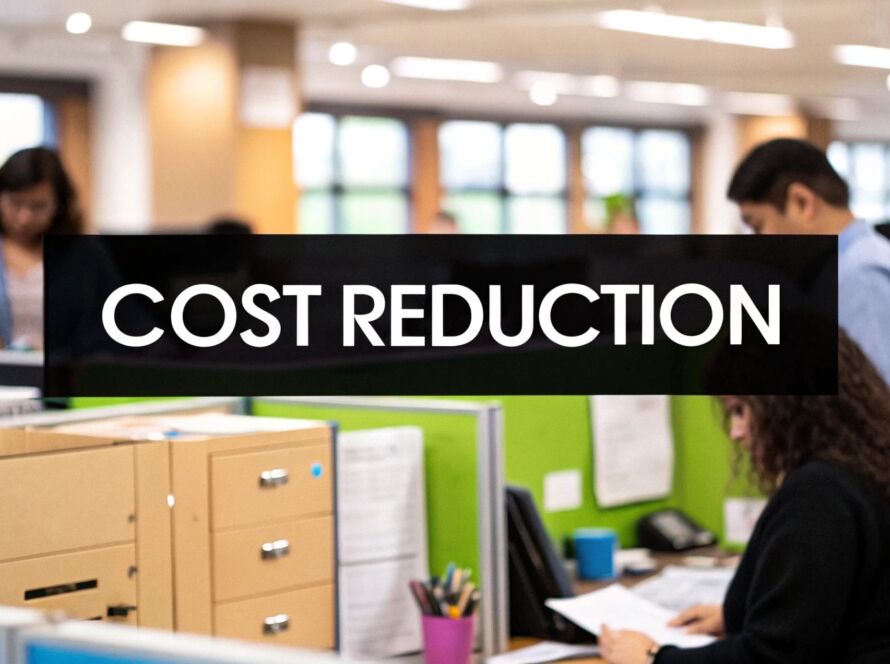Understanding Why Validation Makes or Breaks Startups

The world of startups is full of inspiring success stories and crushing failures. One key factor often determines which path a startup takes: validation. Proper validation helps you avoid common pitfalls and make smart choices about where to invest your precious time and resources. Without it, even brilliant ideas can falter.
Why Validation Is More Than Just a Buzzword
The numbers tell a stark story – around 90% of startups don't succeed. This means that of every ten excited founders starting new ventures, only one typically creates a lasting business. Take Quibi as a prime example. Despite raising $1.75 billion and having experienced leaders at the helm, the streaming service failed because they didn't properly test if people actually wanted their product. The lesson is clear: no amount of funding or expertise can make up for skipping proper validation with real customers.
Separating Genuine Interest from Polite Enthusiasm
One major challenge in validation is distinguishing between real market demand and mere politeness. While friends and family mean well, their encouraging words often don't translate to actual paying customers. True validation requires going beyond casual conversations to do structured research that reveals if your target audience will actually open their wallets. Ask yourself: Are potential customers actively searching for solutions like yours, or are they just intrigued by something new? The difference matters immensely for your startup's future.
Learning From the Success Stories
Successful founders consistently emphasize how critical early validation was to their journey. Many wish they had known more about effective validation methods when starting out. These entrepreneurs learned that validation isn't a one-time task but an ongoing process of testing assumptions, gathering feedback, and adapting to what the market truly wants. For example, pre-selling to early adopters can provide powerful validation before investing heavily in development. This hands-on approach to gathering evidence about customer interest helps founders refine their offering and build something people genuinely want. When done right, validation becomes the foundation that helps turn promising ideas into thriving businesses.
Mastering the Essential Metrics That Matter
Numbers don't tell the whole story when it comes to validating your startup idea. What truly matters is tracking the right metrics – the ones that give you real insights into market potential and customer behavior. Let's explore the key performance indicators that successful startups use to make smart decisions and avoid getting distracted by surface-level data.
Identifying Key Performance Indicators (KPIs) for Your Startup
Start by pinpointing which metrics directly connect to your business model and goals. A SaaS startup needs to watch customer lifetime value and churn, while an e-commerce business should focus on conversion rates and average order size. By zeroing in on the metrics that impact your bottom line, you'll get a clear picture of what's working. This focused approach helps you track what truly matters for long-term success.
Measuring and Interpreting Customer Acquisition Cost (CAC)
Understanding how much it costs to bring in each new customer is vital for sustainable growth. If your CAC is too high compared to what customers spend, it signals a problem with your business model. Compare your numbers to industry standards to see where you stand. For example, if you're spending $100 to acquire customers who only generate $50 in revenue, you'll need to either reduce acquisition costs or increase customer value to build a viable business.
Understanding Engagement Rates and Their Predictive Power
Website visits, time on site, and social interactions give valuable clues about how people connect with your offering. But these numbers need context – high engagement with low sales might mean your product isn't meeting customer needs or your pricing is off. For instance, if 1000 people visit your site daily but only 2 make purchases, you should investigate what's stopping them from buying. Looking at engagement alongside other metrics helps paint the full picture.
Setting Up Meaningful Experiments for Reliable Data
Getting real market feedback requires running thoughtful tests that produce trustworthy results. Instead of just asking friends what they think, try A/B testing different price points, marketing messages, and features. As you collect data, you can clearly see what resonates with your target customers. For example, testing two landing page versions lets you measure which design and copy drive more sign-ups. The key is making decisions based on actual customer behavior rather than assumptions. Each experiment gives you concrete insights to improve your product and grow your startup strategically.
Conducting Market Research That Actually Works

Market research is far more than just casual customer conversations – it's about gaining real, actionable insights into what your target market truly needs. Think about it: you could spend months perfecting an amazing app with all the bells and whistles, only to launch and discover that nobody actually wants it. That's why understanding your market deeply before building anything is absolutely essential.
Identifying Your True Target Market
Finding your ideal customer requires looking beyond basic demographics like age and location. You need to dig deeper into what makes them tick – their values, interests, daily habits, and lifestyle choices. For example, if you're creating a meal planning app, knowing that your target audience is "busy professionals" isn't enough. You need to understand their specific cooking habits, food preferences, shopping routines, and what frustrates them about current meal planning solutions. This detailed understanding shapes everything from your product features to your marketing message.
Understanding Customer Pain Points and Willingness to Pay
After identifying who your customers are, focus on truly understanding their challenges. What problems keep them up at night? How are they currently trying to solve these issues? Most importantly – are they willing to pay for a better solution? For instance, if you're building a premium project management tool, you need concrete evidence that companies will invest in yet another software solution. Study their current spending patterns on similar tools and gather direct feedback about pricing expectations. This real-world data helps validate your revenue model before you invest significant resources.
Building and Engaging with Test Groups for Reliable Feedback
Creating a focused test group that mirrors your target market is key to getting honest, valuable feedback. Move beyond asking friends and family what they think – they're likely to just tell you what you want to hear. Instead, build relationships with actual potential customers. One effective approach is launching a simple landing page that offers early access in exchange for feedback. Host one-on-one conversations, run focused group discussions, and use targeted surveys to gather specific insights. When possible, connect directly with decision-makers in your target market through industry events or professional networks like LinkedIn. Their firsthand perspective on purchasing decisions can make or break your startup's success.
Pre-Selling: Converting Interest Into Actual Commitments
Getting real paying customers is the most reliable way to validate your startup idea. While market research and metrics provide useful insights, nothing beats actual commitments from people willing to pay for your solution. Pre-selling lets you test your concept by securing pre-orders or sign-ups before building the full product. This smart approach minimizes risk and gives you direct feedback to shape your offering.
Why Pre-Selling is More Than Just Early Sales
Think about spending months building a product only to find out nobody wants it. Pre-selling helps you avoid this nightmare scenario by confirming real demand upfront. For example, if you can get 10 people to pre-pay $50 monthly subscriptions for your software, that's not just $500 in revenue – it proves people value your solution enough to pay for it sight unseen. This concrete validation through pre-sales is far more meaningful than survey responses or general interest.
Structuring Irresistible Pre-Sale Offers
The key to successful pre-selling is creating an offer your target customers can't resist. Consider what truly matters to them – is it getting exclusive early access? Special pricing? Bonus features? For example, many early adopters love being first to try new products, so emphasizing their "pioneer" status can be compelling. Be crystal clear about the specific problems you'll solve and why pre-ordering now is worth it, even before the full release. Paint a vivid picture of how their lives will improve with your solution.
Handling Objections and Building a Waiting List
Some hesitation is natural when asking people to pre-pay for an unreleased product. Be ready with clear answers to common concerns like "What if I don't like it?" or "Why not wait until launch?" A simple money-back guarantee can ease fears, while emphasizing the limited-time nature of pre-sale pricing creates urgency. For those not ready to commit, build an engaged waiting list. This lets you nurture relationships and potentially convert them later while creating buzz and social proof around your offering.
Using Early Adopter Feedback To Refine Your Concept
Your pre-sale customers are gold mines of insights that can dramatically improve your final product. Create dedicated channels for them to share feedback, suggestions and concerns. Have one-on-one conversations to really understand their needs and pain points. This direct line to your earliest supporters helps you refine features and positioning while building lasting relationships. The continuous feedback cycle ensures you're building something people truly want and are willing to pay for – the ultimate validation of your startup idea.
Building an MVP That Tests Core Assumptions

Once you've researched your market and pre-sold to gauge interest, it's time to build your Minimum Viable Product (MVP). Rather than creating a fully-featured solution right away, focus on developing just enough to test your main hypotheses with real users. This practical approach lets you gather authentic feedback and adapt quickly based on how people actually use your product.
Defining the Core Assumptions of Your MVP
Start by clearly identifying what key beliefs need validation before investing heavily in development. These fundamental assumptions form the foundation of your startup concept. For instance, if you're creating a meal-kit delivery service, you might need to verify whether busy professionals would pay more for pre-portioned ingredients with recipes. You may also want to test if they prefer subscribing versus making one-off purchases. Pinpointing these critical assumptions helps guide your MVP development efforts effectively.
Choosing the Right MVP for Your Startup Idea
Different startup concepts call for different MVP approaches. A software product might start as a basic web application with limited features. For physical products, you could begin with a 3D-printed prototype or small production batch. Look for smart ways to test your core assumptions without major spending – perhaps by using existing platforms or working with other businesses. This practical mindset helps you gain valuable insights while keeping costs manageable.
Gathering and Interpreting User Feedback
When your MVP reaches your target users, actively seek their input. Create clear feedback channels through surveys, in-app forms, and direct conversations. Don't just focus on praise – specifically ask about pain points and areas for improvement. For example, if users consistently struggle with a particular feature, that's a clear signal to redesign or simplify it. This direct user feedback provides essential guidance for improving your product's market fit.
Iterating and Pivoting Based on Market Response
Stay ready to adjust course based on what the data tells you. If users don't respond to your MVP as expected, that's not necessarily failure – it's valuable information guiding you toward a better solution. Perhaps your pricing needs adjustment, or you're missing a crucial feature. Maybe your ideal customer is different than you imagined. This flexibility to adapt is essential for startup success. Remember that about 90% of startups don't make it, often because they can't or won't adjust to market feedback. By building an MVP and evolving based on real user data, you greatly improve your chances by creating something people truly want. This cycle of testing, learning, and adapting is key to building a lasting business.
Avoiding the Hidden Traps of Validation

Success in the startup world requires more than just an exciting idea – you need to validate your concept thoroughly. But the validation process itself has hidden pitfalls that can derail even the most promising ventures. Understanding these potential traps is just as important as knowing effective validation techniques.
Recognizing and Overcoming Confirmation Bias
When validating ideas, we naturally tend to seek out information that supports our existing beliefs. For instance, a founder who's deeply invested in their concept might focus only on positive feedback while dismissing legitimate concerns as outliers. This creates a skewed view of actual market demand that can lead to costly mistakes. The key is actively seeking diverse perspectives, including those that challenge your assumptions. Bring in an external advisor who can provide honest, objective feedback without emotional attachment to the idea.
Avoiding the Echo Chamber Effect
Similar to confirmation bias, getting caught in an echo chamber reinforces existing beliefs by limiting exposure to different viewpoints. This often happens when founders only discuss their ideas with supportive friends and colleagues. While having cheerleaders is valuable, relying solely on them creates false validation. Break free by actively seeking feedback from people outside your immediate circle, especially potential customers in your target market who will give you the unvarnished truth.
Distinguishing Between Genuine Validation and False Positives
Not all positive signals carry equal weight. A common trap is mistaking general enthusiasm for real market demand. Someone expressing interest in your concept at a networking event doesn't necessarily translate to a paying customer. True validation requires concrete evidence like pre-orders, sign-ups, or clear willingness to pay. Look for specific actions that show people are ready to open their wallets, not just offer encouraging words.
Maintaining Objectivity and Interpreting Negative Feedback
Staying objective during validation is crucial but challenging, especially when faced with criticism. Rather than getting defensive, embrace negative feedback as valuable insight that highlights areas for improvement. For example, if multiple potential customers express confusion about your value proposition, that's a clear signal to refine your messaging. Let criticism guide positive changes rather than seeing it as a personal attack.
Knowing When to Persist Versus When to Pivot
Validation is an ongoing process of refinement and sometimes the market response isn't what you hoped for. The key is knowing when to keep pushing forward with your original vision versus when to pivot to a new approach. If you're consistently hitting roadblocks and failing to meet key metrics despite extensive testing, consider adapting your strategy based on what you've learned. This flexibility and willingness to evolve based on real market feedback separates successful startups from the roughly 90% that don't make it.
Ready to turn your vision into a validated, market-ready product? MarkBox Studios specializes in helping founders like you navigate MVP development and build scalable solutions. We provide practical guidance and personalized consultations to help drive sustainable business growth. Visit us at https://www.markboxstudios.com and let's bring your startup idea to life.



